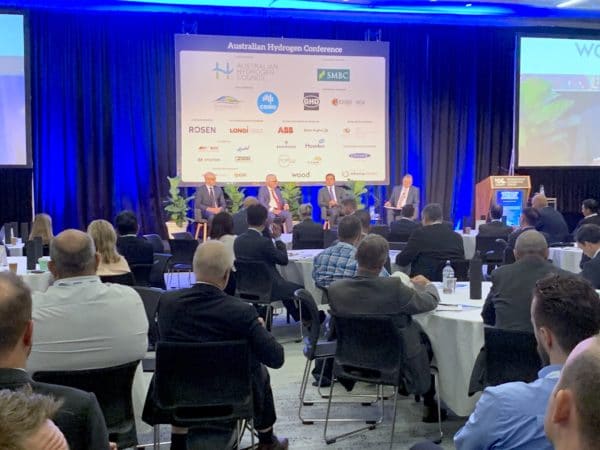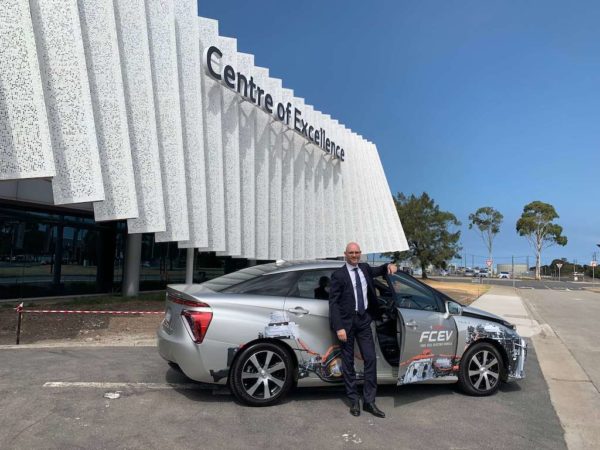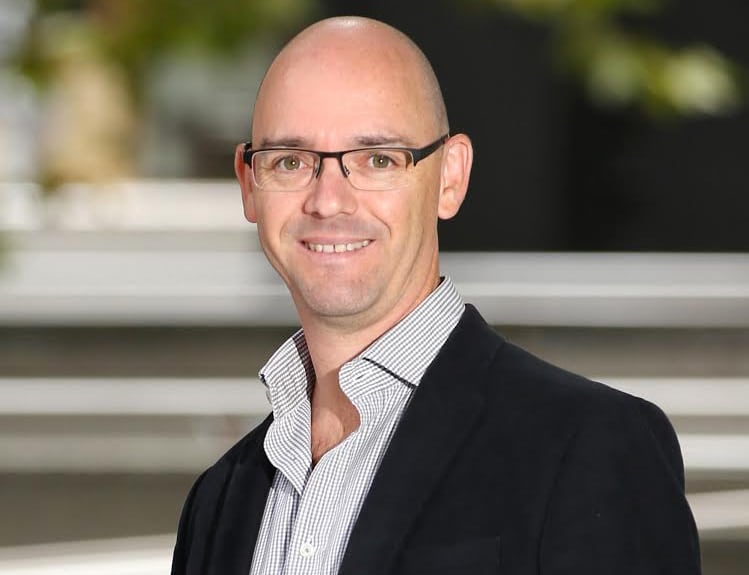Established almost a decade ago, Australian Renewable Energy Agency (ARENA) allocates federal funds to green energy projects across the country. During last week’s Australian Energy Week, the agency’s chief executive, Darren Miller, gave a speech in which he upped the ante in terms of where Australia’s renewable energy generation should be aiming – which he says should be “five to ten times more than is supplied by our electricity system today.”
“This electricity will not only be used to provide zero emissions lighting, heating and cooling to our homes and businesses, but will be used to power our transport and heavy industry — either directly or through the production of hydrogen,” Miller wrote in a LinkedIn post which was adapted from the speech.
“With the right mix of storage and peaking technologies, transmission and interconnection, and demand side flexibility, we can get to a scale that allows Australia to transform our domestic economy and supply clean energy to other countries without the same natural resources.”
His sentiments were similar to those expressed by his colleague Matt Walden, ARENA’s Director of Business Development and Transactions, who spoke at the Australian Hydrogen Conference in Sydney last Wednesday. There Walden described hydrogen as front and centre of the agency’s investments, with both men framing hydrogen as an ideal medium for Australia to export its surplus clean power.

Bella Peacock
Global Head of Industry and Building Decarbonisation at Bloomberg New Energy Finance (BNEF), Kobad Bhavnagri, said at the same conference, however, that the economics of Australia’s hydrogen export market remain “poor” due to the high cost of transport coupled with the costs of processing hydrogen at each end (for example “cracking” ammonia molecules to turn them back into pure hydrogen).
Be that as it may, superpowers like Germany remain undeterred, eager to pursue close alliances with Australia, seeing it as one of the most promising, if not the most promising, hydrogen suppliers globally. In fact, Chief Executive of the German–Australian Chamber of Industry and Commerce, Christoph von Speßhardt, commented on Darren Miller’s ambitious vision saying: “Australia can become the clean energy superpower – and make “shipping the sunshine” a very profitable reality!”

Image: ARENA
Intellectual property
Miller also noted that solar PERC cells, invented by Australian researchers, “are now the dominant PV technology globally with over 90 per cent of global manufacturing having switched to PERC cell technology.” Drawing on this history of leading renewable energy technology, Miller extended it to what’s poised to be the new frontier: green hydrogen.
ARENA’s Director of Business Development, Matt Walden, also drew on this history of innovation at the Hydrogen Conference, saying that he wants to see Australia not only exporting clean energy but also its intellectual property. If we’re able to accelerate research and development into new technologies and processes today, he outlined, we will be at the global forefront when 2040 rolls around.
This content is protected by copyright and may not be reused. If you want to cooperate with us and would like to reuse some of our content, please contact: editors@pv-magazine.com.









1 comment
By submitting this form you agree to pv magazine using your data for the purposes of publishing your comment.
Your personal data will only be disclosed or otherwise transmitted to third parties for the purposes of spam filtering or if this is necessary for technical maintenance of the website. Any other transfer to third parties will not take place unless this is justified on the basis of applicable data protection regulations or if pv magazine is legally obliged to do so.
You may revoke this consent at any time with effect for the future, in which case your personal data will be deleted immediately. Otherwise, your data will be deleted if pv magazine has processed your request or the purpose of data storage is fulfilled.
Further information on data privacy can be found in our Data Protection Policy.